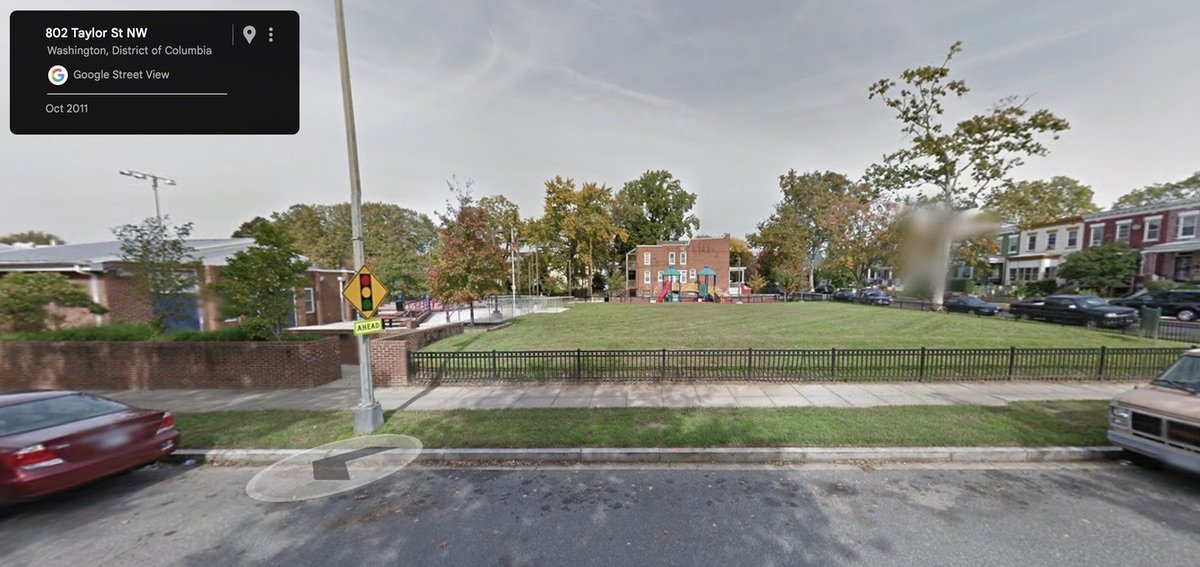Oh, the weeds of Petworth...
/The ubiquitous dandelion
by Catherine Piacente
Every spring I look out on my yard and tell myself, “Yes, this will be the year I create my garden.”
Several weeks later, I am cursing every square inch of "greenery" and wondering just how many weeds there could possibly be in my postage stamp of a yard -- most likely because I tried to take a shortcut.
There isn’t an easy way around manually removing weeds if you want to use the same soil in the same season. The plants are just one part of the problem. If you want to see fewer weeds in the near and distant future, you have to get rid of their seeds and roots. Seeds are stubbornly resilient and weeds can regrow from root remnants. Your future-self will thank you.
Of course, it helps to know what to rip out. Here's a small selection of what can be found around Petworth.
Probably the easiest to identify is the Dandelion. Even with the mercurial weather DC has had, bright yellow dandelions are popping up everywhere. Its slim, serrated leaves grow outwards from a central point, resembling a star when viewed from above.
Buckhorn plantain.
Similar in shape to the dandelion is the Buckhorn Plantain. The main difference between the weeds is the shape of the leaves.
Both plants should be pulled out, along with every piece of the roots you can get.
Wear gloves when pulling the purple dead nettle.
Purple Dead Nettle grows on a distinctive squared stem. Each stack of pointed leaves is topped with a cluster of tiny flowers. It is relatively easy to remove thanks to its shallow roots -- often I will pull on a large mass of stems to find that it is connected to the ground by one root. Make sure to wear gloves. While they don’t pack the same punch as stinging nettle, purple dead nettle can still leave you with irritated hands.
Chickweed
Another relatively easy to remove weed is common Chickweed. Its small, rounded leaves grow on a long, relatively thick stem. The flower buds resemble peas. Once in bloom, they look like tiny, lacy daisies. Chickweed can grow into a dense mat several inches deep. If in the lawn, grass can eventually crowd it out. Remove the greenery before it blooms to tip the scales in favor of your grass.
Bindweed
If you see this vine growing in your garden, rip out every bit of it you can find. Be ruthless. There’s a reason it’s called Bindweed. It can cover a yard with knots of twisted vines in record time and has been known to smother trees. This invader blooms with large, white, trumpet-shaped flowers that resemble those of the morning glory, a domesticated cousin.
Another vine to watch out for is Poison Ivy. At this point in the season it will be easy to identify: young leaves are a distinctive dark red, which you can see peeking out from behind the green vines. The mature vines have a hairy appearance. Out of all the weeds you’ll find, poison ivy requires the most care and precaution. Do not under any circumstances burn poison ivy.
On the topic of removing poison ivy, I defer to the experts. A quick search will get you numerous detailed guides with a range of techniques. Use the one that best suits your circumstances.
The one universal instruction is to dress appropriately. Be the most stylish gardener on your block by tucking your pant legs into your boots or socks and sleeves into your gloves. It is a far better style than an awful, itchy rash.
Ultimately, the best way to control weeds is to encourage the plants you do want, whether it’s grass or a bed of flowers. Weeds are opportunistic, taking advantage of open space and poor soil conditions to get a foothold before anything else can. Most aren’t the strongest of plants but make up for it in tenacity. By fostering a healthy lawn or creating the perfect conditions for your flowers, you give those plants what they need to overpower and crowd out the weeds.
If, like me, you’re looking out at a sad, scraggly mess, the above step falls into the category of things to think about in the future. Regardless of your current garden conditions, the way forward is a campaign of identifying and destroying those pesky weeds.
Catherine Piacente is a writer and sociologist living in Petworth. She moved to the DC area over a decade ago and found her niche in Petworth along with a couple of kittens. She enjoys gardening, science fiction in all forms, knitting, sewing, historical research, and digging into the intersections of systems of oppression.



















